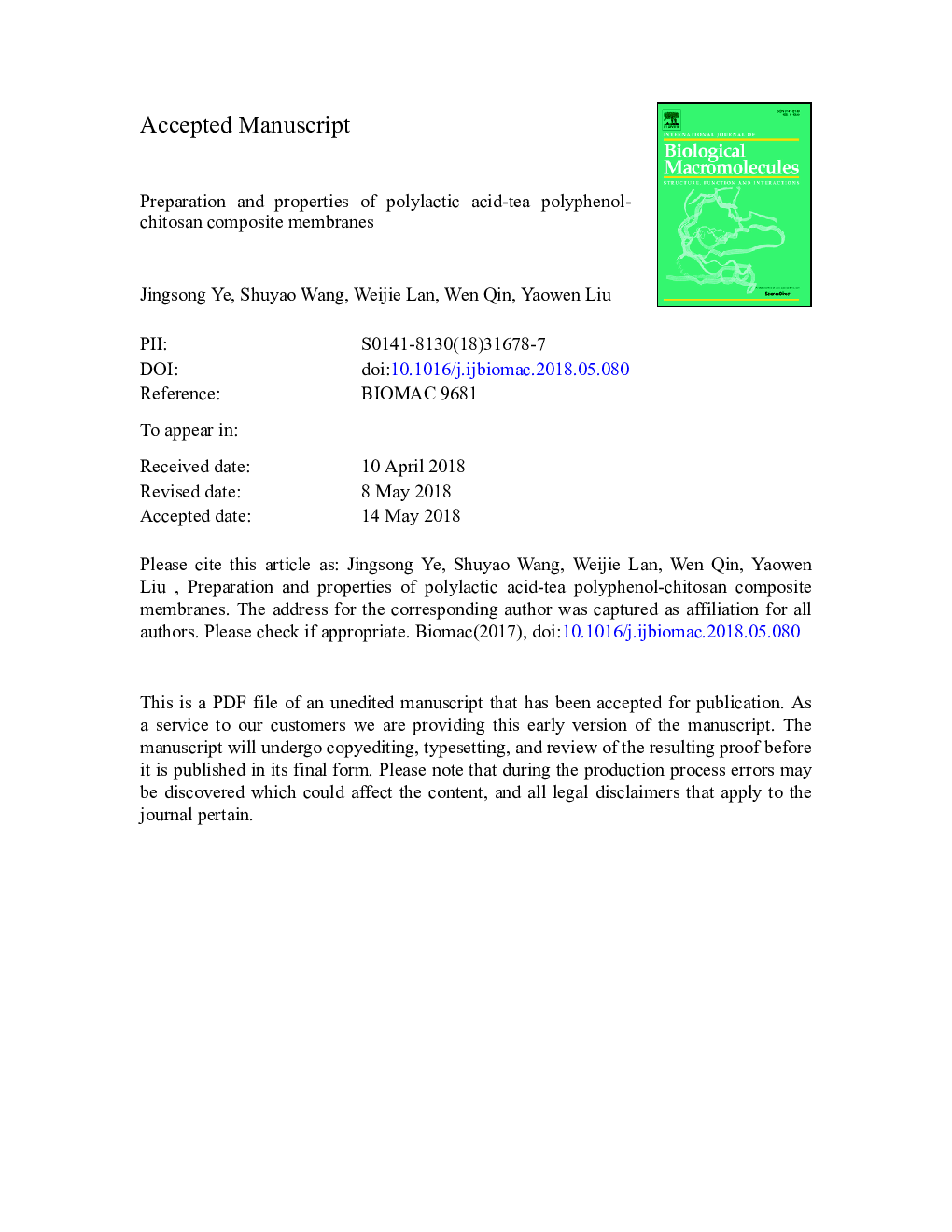| Article ID | Journal | Published Year | Pages | File Type |
|---|---|---|---|---|
| 8327029 | International Journal of Biological Macromolecules | 2018 | 28 Pages |
Abstract
To study the properties of composite membranes consisting of polylactic acid (PLA), tea polyphenol (TP), and chitosan (CS), the stretch film method was employed to make PLA-TP- CS composite membranes of different concentrations. By testing the density, mechanical properties, heat-sealing performance, water vapor permeability, and solubility of the pure PLA membrane and the composite membranes, the comprehensive performance of the composite membranes were analyzed with regard to the actual use value. The results show that, compared with the pure PLA membrane, adding TP and CS significantly increases the heat-sealing strength, water vapor permeability, and solubility of the composite membrane. When the composite membrane is used for the preservation of cherries, it is found that the composite membrane with the mass ratio of TP to CS of 3:7 can decrease the rotting rate and mass loss rate significantly, postpone the consumption of soluble solids and vitamin C, maintain the quality of the cherries, and extend the shelf life, thus proving its potential for application in food packaging.
Related Topics
Life Sciences
Biochemistry, Genetics and Molecular Biology
Biochemistry
Authors
Jingsong Ye, Shuyao Wang, Weijie Lan, Wen Qin, Yaowen Liu,
